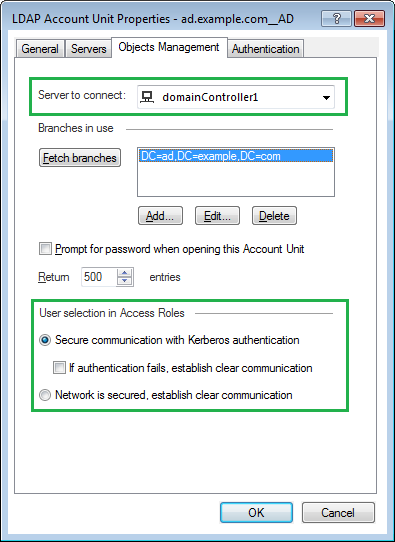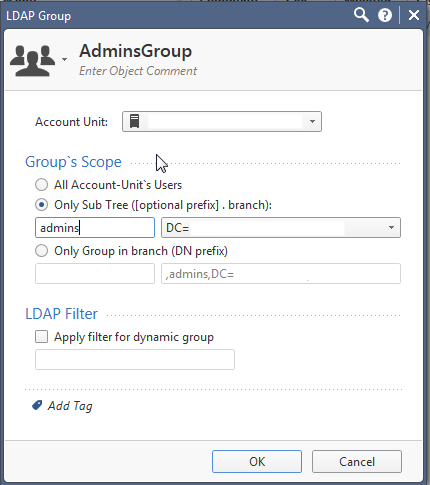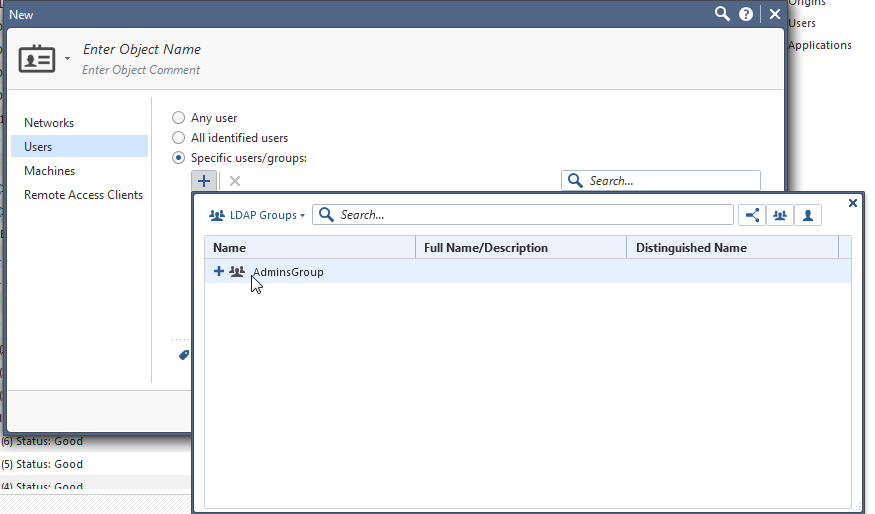- Products
Network & SASE IoT Protect Maestro Management OpenTelemetry/Skyline Remote Access VPN SASE SD-WAN Security Gateways SmartMove Smart-1 Cloud SMB Gateways (Spark) Threat PreventionCloud Cloud Network Security CloudMates General CloudGuard - WAF Talking Cloud Podcast Weekly ReportsSecurity Operations Events External Risk Management Incident Response Infinity AI Infinity Portal NDR Playblocks SOC XDR/XPR Threat Exposure Management
- Learn
- Local User Groups
- Partners
- More
This website uses Cookies. Click Accept to agree to our website's cookie use as described in our Privacy Policy. Click Preferences to customize your cookie settings.
- Products
- AI Security
- Developers & More
- Check Point Trivia
- CheckMates Toolbox
- General Topics
- Products Announcements
- Threat Prevention Blog
- Upcoming Events
- Americas
- EMEA
- Czech Republic and Slovakia
- Denmark
- Netherlands
- Germany
- Sweden
- United Kingdom and Ireland
- France
- Spain
- Norway
- Ukraine
- Baltics and Finland
- Greece
- Portugal
- Austria
- Kazakhstan and CIS
- Switzerland
- Romania
- Turkey
- Belarus
- Belgium & Luxembourg
- Russia
- Poland
- Georgia
- DACH - Germany, Austria and Switzerland
- Iberia
- Africa
- Adriatics Region
- Eastern Africa
- Israel
- Nordics
- Middle East and Africa
- Balkans
- Italy
- Bulgaria
- Cyprus
- APAC
CheckMates Fest 2026
Join the Celebration!
AI Security Masters
E1: How AI is Reshaping Our World
MVP 2026: Submissions
Are Now Open!
What's New in R82.10?
Watch NowOverlap in Security Validation
Help us to understand your needs better
CheckMates Go:
Maestro Madness
Turn on suggestions
Auto-suggest helps you quickly narrow down your search results by suggesting possible matches as you type.
Showing results for
- CheckMates
- :
- Products
- :
- Network & SASE
- :
- Management
- :
- Re: R80 Identity awareness Client side logic/serve...
Options
- Subscribe to RSS Feed
- Mark Topic as New
- Mark Topic as Read
- Float this Topic for Current User
- Bookmark
- Subscribe
- Mute
- Printer Friendly Page
Turn on suggestions
Auto-suggest helps you quickly narrow down your search results by suggesting possible matches as you type.
Showing results for
Are you a member of CheckMates?
×
Sign in with your Check Point UserCenter/PartnerMap account to access more great content and get a chance to win some Apple AirPods! If you don't have an account, create one now for free!
- Mark as New
- Bookmark
- Subscribe
- Mute
- Subscribe to RSS Feed
- Permalink
- Report Inappropriate Content
Jump to solution
R80 Identity awareness Client side logic/server side logic
Good morning all
Running through the R80 CCSE course today and we were discussing the change from R7X to R80 in the way that the smart console interacts with the database. In pre R80 the smart dashboard effectively downloads a copy of the database for editing and only writes back during save function. In R80+ it is more of a client interacting with a database located on the manger in more or less real time. Makes sense as this allows for multiple managers etc. My question though comes from the use of user groups in rules when Identity awareness is enabled. In R7X the local PC that had the smart dashboard installed needed to be able to talk to the AD server to populate the AD objects such as users or groups. Has this interaction with the AD been pushed to the management server in R80. So only the management server needs to be able to talk to the AD?
If it has this this would end up being a massive plus for remote management of clients Checkpoints using Identity awareness in there rule base, a great boon for us MSP's.
1 Solution
Accepted Solutions
- Mark as New
- Bookmark
- Subscribe
- Mute
- Subscribe to RSS Feed
- Permalink
- Report Inappropriate Content
In R80.10, when the administrator searches for LDAP entities, such as users and groups, the flow is as follows:
- Administrator searches for LDAP entities, such as users and groups.
- The search properties are sent from the SmartConsole GUI client to the Management Server.
- The Management Server opens the LDAP connection to the AD domain controller based on the operating system routing and interfaces.
- The Management Server performs an LDAP query against the AD domain controller and sends the result back to the SmartConsole GUI client.
- The SmartConsole GUI client presents the candidates to the administrator.
- If the administrator configured the Account Unit object to work with SSL, then the Management Server opens the LDAPS connection. In addition, the port that is configured, is the port that is used.
The available LDAP connection options are:
- Kerberos LDAP bind with encryption
- Kerberos LDAP bind with encryption, but if it fails, use a Simple LDAP bind.
- Simple LDAP bind
- LDAPS bind
(5) Notes:
- The recommendation is to use LDAPS bind. However, the domain controller should allow it.
- The default option is Kerberos LDAP bind with encryption.

14 Replies
- Mark as New
- Bookmark
- Subscribe
- Mute
- Subscribe to RSS Feed
- Permalink
- Report Inappropriate Content
In R80.10, when the administrator searches for LDAP entities, such as users and groups, the flow is as follows:
- Administrator searches for LDAP entities, such as users and groups.
- The search properties are sent from the SmartConsole GUI client to the Management Server.
- The Management Server opens the LDAP connection to the AD domain controller based on the operating system routing and interfaces.
- The Management Server performs an LDAP query against the AD domain controller and sends the result back to the SmartConsole GUI client.
- The SmartConsole GUI client presents the candidates to the administrator.
- If the administrator configured the Account Unit object to work with SSL, then the Management Server opens the LDAPS connection. In addition, the port that is configured, is the port that is used.
The available LDAP connection options are:
- Kerberos LDAP bind with encryption
- Kerberos LDAP bind with encryption, but if it fails, use a Simple LDAP bind.
- Simple LDAP bind
- LDAPS bind
(5) Notes:
- The recommendation is to use LDAPS bind. However, the domain controller should allow it.
- The default option is Kerberos LDAP bind with encryption.

- Mark as New
- Bookmark
- Subscribe
- Mute
- Subscribe to RSS Feed
- Permalink
- Report Inappropriate Content
Excellent, So that is a change in behavior from R7X where the client would do the LDAP look up when editing the policy for the sake of adding LDAP objects that is going to make life a little more easy for remote management.
- Mark as New
- Bookmark
- Subscribe
- Mute
- Subscribe to RSS Feed
- Permalink
- Report Inappropriate Content
So in a Multi Domain setup, where we have many different customers and locations scattered around the world, where we have no access to their AD servers from the MD servers, we have to tell our customers who control this part themselves today, will no longer be able to use IA?
As the SmarDashboard client in these cases was in their network with access to their AD and the domain management server, which is in ours, the old situation worked just fine, but will no longer work. This will mean we will need to get the NAT trick to work in this situation.
We need to create another AD server with the NAT IP that we need to connect to from the Management server (will it use the MDS IP or the DMS IP as the source? That NAT IP AD server will be the one in the top filed shown in the previous post and it should use an encrypted LDAP method. Then use the Priorities again to make it totally uninteresting to connect to.
Regards, Maarten
- Mark as New
- Bookmark
- Subscribe
- Mute
- Subscribe to RSS Feed
- Permalink
- Report Inappropriate Content
In R80 you can create a site to site VPN between the firewall in front of the MDS and the customers gateway then use hide NAT so that you do not get overlapping encryption domains and a dummy AD server like you mention above . That way the MD servers will be able to talk to the AD servers directly.
One slightly creative if over complicated way we have managed to get round the issue in R7X is to create a port forward through an SSL tunnel between you and one of the customer gateways to get to the AD server. Then as you mention above create a dummy object in the dashboard with the port forward IP address as AD server and set that dummy object with no priority. It works so long as you bring up the SSL tunnel with the port forward before connecting to the dashboard.
- Mark as New
- Bookmark
- Subscribe
- Mute
- Subscribe to RSS Feed
- Permalink
- Report Inappropriate Content
Nigel,
All very nice but there are some snags in this scenario for us, we have around 30 customers using IA already out of the 150 total customers, with number growing.
Next to that we do not manage the FW in front of our MDS, that is another team within our company and this is always a challenge of its own.
We really don't want to build tunnels for this for each and every customer, certainly not when you want the customer themselves to manage the rulebase with the IA part.
Regards, Maarten
- Mark as New
- Bookmark
- Subscribe
- Mute
- Subscribe to RSS Feed
- Permalink
- Report Inappropriate Content
Hi Maarten,
Good to see you here ![]() I'm looking forward to seeing more posts from you
I'm looking forward to seeing more posts from you ![]()
You raised an important point. What I can offer you with R80.10 is to use the LDAP Group objects.
1. Create an LDAP Group object.


2. Create an Access Role Object.

Inside the "Users" page, make sure you change the selection to "LDAP Groups". Then use the LDAP Group that you created in the previous steps.

Drawback is that you will miss the LDAP picker unfortunately.
Hope this helps.
We plan to simplify this further in our next releases.
- Mark as New
- Bookmark
- Subscribe
- Mute
- Subscribe to RSS Feed
- Permalink
- Report Inappropriate Content
Tomer, sorry to come back late on this issue.
I now have a working situation where the management server can access the AD through a NAT construction, but what I noticed is that when you use the fetch branches from the LDAP server object, it uses the IP of the Domain server, but when you try to add a user role and want to browse the AD it switches to the main IP of the MDS server.
I was told that there would be an option to set the Gateway as a proxy for this part of the communication, will this be part of the R80.20 GA?
Regards, Maarten
- Mark as New
- Bookmark
- Subscribe
- Mute
- Subscribe to RSS Feed
- Permalink
- Report Inappropriate Content
Hi Maarten,
It's still part of the R80.20 public EA release notes:
"Ability to use an Identity Awareness Security Gateway as a proxy to connect to the Active Directory environment, if SmartConsole has no connectivity to the Active Directory environment and the gateway does"
You mean this one?
I don't see it being cancelled at this stage of the EA, but let's wait for RnD to confirm.
Cheers
Martijn
- Mark as New
- Bookmark
- Subscribe
- Mute
- Subscribe to RSS Feed
- Permalink
- Report Inappropriate Content
Hi Martijn,
I think that is what was said before, however it is not the SmartConsole itself that connects to the AD, as it was in R77.30 It now is the Management server and as you know how our environment is built, this will improve the scurity of this specific communication, without a need for VPN's to every customer.
Greetings Maarten.
Regards, Maarten
- Mark as New
- Bookmark
- Subscribe
- Mute
- Subscribe to RSS Feed
- Permalink
- Report Inappropriate Content
Hi Tomer,
Been posting here for a while alerady...
Will the simplification include the gateway to make a proxy connection to the AD server?
The might be used as a workaround but is certainly not the way we want the customers to go forward, so we hope you can really make it work in a different way.
Regards, Maarten
- Mark as New
- Bookmark
- Subscribe
- Mute
- Subscribe to RSS Feed
- Permalink
- Report Inappropriate Content
Been posting here for a while alerady...
And it seems that I also replied to some of those posts ![]() apparently sometimes I reply from my sleep and don't notice the names of the people asking the question..
apparently sometimes I reply from my sleep and don't notice the names of the people asking the question..
- Mark as New
- Bookmark
- Subscribe
- Mute
- Subscribe to RSS Feed
- Permalink
- Report Inappropriate Content
Tomer,
Would you care to comment on this part:
what I noticed is that when you use the fetch branches from the LDAP server object, it uses the IP of the Domain Management Server,
but when you try to add a user role and want to browse the AD it switches to the main IP of the MDS server.
Were there two teams working these parts, where the one team did think about using the Domain IP and the other team did not think about that and ended up using the MDS IP?
Thanks Maarten.
Regards, Maarten
- Mark as New
- Bookmark
- Subscribe
- Mute
- Subscribe to RSS Feed
- Permalink
- Report Inappropriate Content
Hi,
We will look into this. Thank you for noticing.
And no, these weren't two different teams... ![]() it's one team, that apparently does way too many features than you would imagine...
it's one team, that apparently does way too many features than you would imagine... ![]()
- Mark as New
- Bookmark
- Subscribe
- Mute
- Subscribe to RSS Feed
- Permalink
- Report Inappropriate Content
Ok, thanks for having a peek.
Regards, Maarten
Leaderboard
Epsum factorial non deposit quid pro quo hic escorol.
| User | Count |
|---|---|
| 22 | |
| 13 | |
| 13 | |
| 6 | |
| 5 | |
| 5 | |
| 5 | |
| 5 | |
| 4 | |
| 4 |
Upcoming Events
Thu 08 Jan 2026 @ 05:00 PM (CET)
AI Security Masters Session 1: How AI is Reshaping Our WorldThu 22 Jan 2026 @ 05:00 PM (CET)
AI Security Masters Session 2: Hacking with AI: The Dark Side of InnovationThu 12 Feb 2026 @ 05:00 PM (CET)
AI Security Masters Session 3: Exposing AI Vulnerabilities: CP<R> Latest Security FindingsThu 26 Feb 2026 @ 05:00 PM (CET)
AI Security Masters Session 4: Powering Prevention: The AI Driving Check Point’s ThreatCloudThu 08 Jan 2026 @ 05:00 PM (CET)
AI Security Masters Session 1: How AI is Reshaping Our WorldThu 22 Jan 2026 @ 05:00 PM (CET)
AI Security Masters Session 2: Hacking with AI: The Dark Side of InnovationThu 26 Feb 2026 @ 05:00 PM (CET)
AI Security Masters Session 4: Powering Prevention: The AI Driving Check Point’s ThreatCloudAbout CheckMates
Learn Check Point
Advanced Learning
YOU DESERVE THE BEST SECURITY
©1994-2025 Check Point Software Technologies Ltd. All rights reserved.
Copyright
Privacy Policy
About Us
UserCenter


